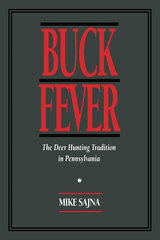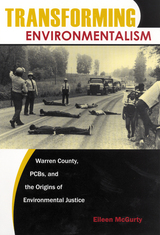
Every fall close to one million hunters enter Pennsylvania’s forests and mountains in quest of the white-tailed deer. Some are seeking sport and companionship; others are stocking their larders for winter; many are conservationists who regard hunting as the most humane way of reducing overpopulated deer herds. They all face the increasing activism of animal rights advocates who are opposed to hunting in principle and who frequently picket and harass hunters.
This controversial subject is explored in depth by Mike Sajna, the outdoors columnist for Pittsburgh Magazine and a twenty-year veteran of Pennsylvania’s “pumpkin army,” the orange-clad throng that invades the woods every season. To explain the ethos and traditions of hunting he takes the reader to a typical deer camp in Warren County, in the rugged terrain of the Allegheny High Plateau. Starting with the trek north from their homes around Pittsburgh, he captures the sights and sounds, thoughts and feelings of three generations of hunters. With humor, affection, and insight he recounts the hunting lore, the camaraderie, the physical testing that make deer camp a unique experience.

"Delivers what no other study has yet attempted. . . . Waldrep's book is one of the first systematically to use local trial data to explore questions of society and culture." -- Vernon Burton, author of "A Gentleman and an Officer": A Social and Military History of James B. Griffin's Civil War

In Transforming Environmentalism, Eileen McGurty explores a moment central to the emergence of the environmental justice movement. In 1978, residents of predominantly African American Warren County, North Carolina, were horrified to learn that the state planned to build a landfill in their county to hold forty thousand cubic yards of soil that was contaminated with PCBs from illegal dumping. They responded to the state's plans with a four-year resistance, ending in a month of protests with over 500 arrests from civil disobedience and disruptive actions.McGurty traces the evolving approaches that residents took to contest "environmental racism" in their community and shows how activism in Warren County spurred greater political debate and became a model for communities across the nation. Transforming Environmentalism explores how the specific circumstances of the Warren County events shaped the formation of the environmental justice movement and influenced contemporary environmentalism.
READERS
Browse our collection.
PUBLISHERS
See BiblioVault's publisher services.
STUDENT SERVICES
Files for college accessibility offices.
UChicago Accessibility Resources
home | accessibility | search | about | contact us
BiblioVault ® 2001 - 2024
The University of Chicago Press









